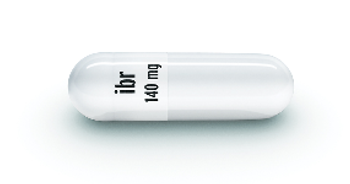
The initial proposals for Value Based Pricing (VBP) in the UK have evolved into something very different. There is now a focus on Value Based Assessment (VBA).

The initial proposals for Value Based Pricing (VBP) in the UK have evolved into something very different. There is now a focus on Value Based Assessment (VBA).

To believe the European Parliament, the battle to create new clinical trials rules for the European Union is over.

Staying on top of the marketing information stream can be difficult for your customers, but plans for a ‘holistic’ healthcare network could make relationships easier to manage.

FDA has reported that it notified Ranbaxy Laboratories, Ltd., on Jan. 23 that it is prohibited from manufacturing and distributing active pharmaceutical ingredients (APIs) from its facility in Toansa, India, for FDA-regulated drug products.

Pharm Exec’s EU correspondent, Reflector, looks at some of the European regulatory developments earmarked for 2014 and anticipates their effect on the industry.

Pharm Exec begins its 34th year with a feature on Russia's ambitious plans to build a homegrown biopharma business. Back in 1980, the biotech industry did not exst. Drugs were still classified as chemicals, developed from the random screening of many thoughts.

Back in 1980, the biotech industry did not exist.

Tom Norton outlines the Obamacare-related questions that are likely to be of concern to pharma companies in the U.S. this year.

The IMS Institute for Healthcare Informatics worked up a methodology for assessing the effectiveness of pharma’s social media efforts across Facebook, Twitter and YouTube.

After two years in budget limbo, Congress finally enacted federal spending legislation for fiscal year 2014 last week, just before the latest funding extension ran out. In this period of ever-tighter government outlays.

Europe’s Innovation Medicines Initiative (IMI) has appointed experts from Portugal and Finland to chair the IMI Scientific Committee.

Presenters at the 32nd annual J.P. Morgan Healthcare Conference talked up value-based pricing, emerging market strategies, complex generics and new technology, from bedside devices and genetic sequencers to first-in-class mechanisms of action.

Pharma marketers have been clamoring for clear advice from the Food and Drug Administration on how to accommodate established rules governing drug promotion to today’s world of internet communications and social messaging.

As expected, the Food and Drug Administration (FDA) approved only 27 new molecular entities (NMEs) in 2013.

With SMEs gaining wider recognition as the powerhouse of research and innovation in Europe, regulatory agencies are urging companies to engage with regulators early in the drug-development process, writes Sean Milmo.

The headlines have moved on for the English Cancer Drugs Fund (CDF). Replacing the positive press releases such as “thousands of patients to benefit” in 2013 are headlines shouting out that “thousands face being denied life-extending medication”.

Two weeks in and the New Year already seems old. Yet members of our Pharm Exec Editorial Advisory Board are still eager to share their top of line predictions on trends that will shape the industry’s business and reputational assets.

Change has never been the word most associated with pharma. Irrespective of a record-breaking number of newly approved drugs over the last two years, a new report just out warns that continued growth is not sustainable unless R&D efficacies at drug companies are addressed and new paradigms adopted.

By using digital signatures to eliminate paper from signature approval processes, pharmaceutical companies are achieving automated processes that are efficient and cost-effective without compromising security or compliance.

It is not only the specific issue of clinical trials rules that hangs in the balance as Europe shifts from 2013 to 2014.

Ten days in and the New Year already seems old. Yet members of our Pharm Exec Editorial Advisory Board are still eager to share their top of line predictions on trends that will shape the industry’s business and reputational assets.

Eli Lilly forecasts that its profit will fall by up to one-third this year, Reuters has reported. The drugmaker’s forecasted revenue for 2014 is now between $19.2 billion and $19.8 billion, with a net income of $3 billion and operating cash flow of $4 billion.

Trying to nail down the actual number of new drugs approvals in 2013 is like trying to swat a fly - it can be highly elusive.

Dominating the frontier of medicines discovery is a simple, endlessly challenging question: if not a drug, then what? Industry science has evolved from the chemical roots of the small molecule to the biologics synthesized from living organisms, but the delivery mechanism – pill or injectable – is basically the same.

For more than fifty years the basic European Union rules about medicines have been clear.

Although a broad compromise was reached in late December on the future shape of the European Union’s clinical trials rules, there are still many details to be resolved – including on that perennial issue of data transparency.

FDA’s new Breakthrough Therapies designation sped Pharmacyclics/J&J’s ibrutinib (brand name: Imbruvica) through regulatory review in four months, based on Phase 2 studies. Pricing and access issues, though, may not get resolved so quickly.

PEGD 2014 Media kit

European Union (EU) regulators today reached agreement on the much-vaunted Clinical Trials Regulation. The regulation harmonizes the rules for the conduct of clinical trials in the EU and the ‘acceptability’ of the resulting data, and places further safeguards on the safety of trial subjects.

The global Parkinson’s Disease market will decline from $3.4 billion in 2012 to $2.9 billion by 2019 (a negative Compound Annual Growth Rate of 2.3%), according to a new report by GBI Research (New York, NY).